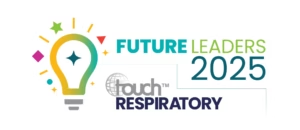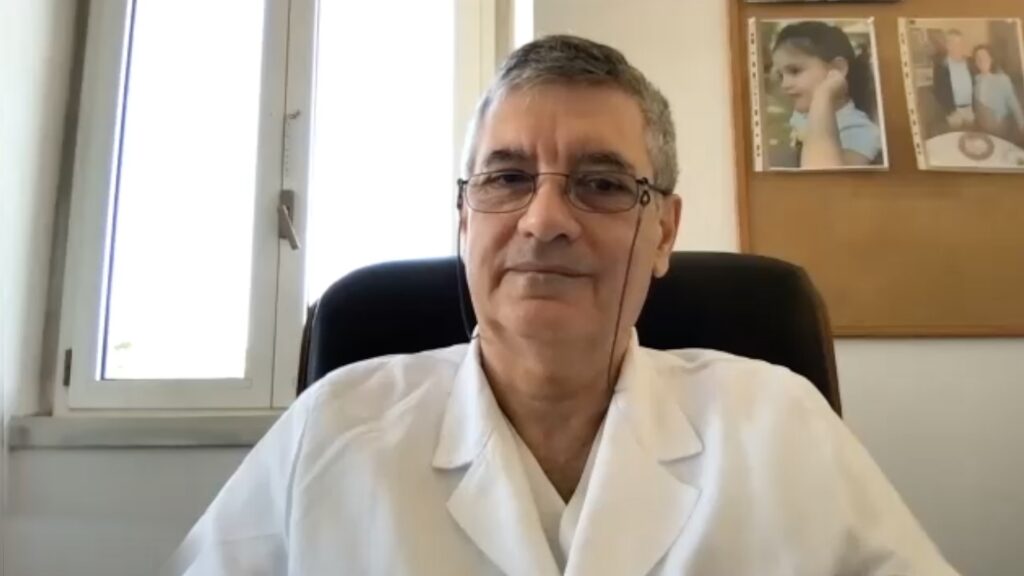
Dr Michelle Korah-Sedgwick is a dedicated physician and educator, specialising in allergy and immunology. Dr Korah-Sedgwick earned her medical degree from the American University of the Caribbean School of Medicine and completed her residency in internal medicine/paediatrics and fellowship in allergy/immunology at LSU Health New Orleans. Dr Korah-Sedgwick is an Associate Professor of Medicine at LSU Health New Orleans and cares for adult patients with allergies and immune deficiencies at UMC New Orleans. Her research centres on improving immune evaluations in patients with chronic lung disease, with a focus on identifying underlying immune deficiencies.
In this Future Leaders interview, Dr. Korah-Sedgwick outlines how her interest in immune deficiencies in chronic lung disease grew from her fellowship training and collaboration with pulmonary colleagues. She explains how her dual background in internal medicine and allergy/immunology enhances her ability to uncover complex, often overlooked conditions in respiratory care. Her research focuses on identifying bronchiectasis subtypes to enable more personalized treatments, and she emphasizes the value of clinical vigilance and the growing impact of patient registries in advancing targeted care.
Q. What drew you to focus your research on immune deficiencies in chronic lung disease, and how has that shaped your work?
My fellowship program had a very robust immunology component, and I had the privilege of evaluating and seeing several patients with immune deficiencies, some of them extremely rare. When I joined the LSU Health Pulmonary Section as an Allergist/Immunologist, I gravitated towards developing a research focus in immune deficiencies in chronic lung disease. I am grateful to have a close and collaborative relationship with my pulmonary colleagues which has helped me to shape and develop my research focus.
Q. How has your combined training in internal medicine and allergy/immunology influenced your approach to respiratory care?
My combined training has really shaped how I approach patients with chronic respiratory disease. Over the years, I’ve seen many cases where patients had what seemed like common diagnoses, but despite standard treatment, they continued to struggle with symptoms. It was only after digging deeper that we uncovered more specific conditions that required targeted and sometimes more intensive treatment. For example, I’ve seen asthma patients who actually had nonsteroidal anti-inflammatory drug (NSAID)-exacerbated respiratory disease, or patients with chronic cough who turned out to have bronchiectasis due to an underlying hypogammaglobulinemia. These kinds of experiences have taught me the importance of going back to the basics—re-examining the history, questioning assumptions, and making sure nothing gets overlooked.
Q. What advances in your research are changing how we evaluate immune function in lung disease?
My research is focused on identifying different endotypes within bronchiectasis which will hopefully lead to identifying subsets of patients that may benefit from different targeted treatments. Bronchiectasis patients can have very different underlying drivers and thus responses to treatment. Ultimately, I hope my research can move us closer to more precise, individualized care for people living with bronchiectasis.
Q. What should clinicians know about addressing immune issues in patients with respiratory disorders?
Firstly, I try to be very mindful about limiting repetitive imaging and radiation exposure; many immune deficiencies come with broader immune dysregulation, which can increase a patient’s risk for malignancy. So while imaging is often necessary, I think it’s important to balance that with the long-term risks, especially in patients who may already be more vulnerable.
Secondly, it’s crucial to remember that these patients might not show the usual signs of infection, like fever, because of their altered immune response. That means we have to maintain a high level of clinical suspicion, even when typical inflammatory markers or symptoms aren’t present. Catching infections early in this population can make a big difference in outcomes, so staying vigilant is key.
Q. What do you see as the most impactful developments coming in allergy and respiratory immunology over the next few years?
The use of clinical registries has been a game changer for improving research and data collection. This is particularly true for immune deficiencies—many of which are rare and underrepresented in the literature. Registries help remedy this by pooling data across institutions and patient populations, making it possible to gain insights that would be difficult to determine otherwise. They’ve also played a key role in better understanding broader, more heterogeneous conditions like bronchiectasis and asthma. By collecting detailed clinical information over time, registries have helped us identify distinct phenotypes and endotypes within these diseases. That kind of deeper characterization is what ultimately paves the way for more targeted and effective treatments.
Further content in allergy.
Editor: Victoria Jones, Senior Content Editor.
Disclosures: This short article was prepared by touchRESPIRATORY in collaboration with Michelle Korah-Sedgwick. touchRESPIRATORY utilize AI as an editorial tool (ChatGPT (GPT-4o) [Large language model]. https://chat.openai.com/chat.) The content was developed and edited by human editors. No fees or funding were associated with its publication.
Cite: Michelle Korah-Sedgwick. Precision Care in Respiratory Immunology – an Interview with Future Leader, Dr Michelle Korah-Sedgwick. touchRESPIRATORY. 23 May 2025.

touchRESPIRATORY is celebrating the brightest rising stars in respiratory and pulmonary medicine, who are set to shape the future of the field.
Register now to receive the touchRESPIRATORY newsletter!
Don’t miss out on hearing about our latest peer reviewed articles, expert opinions, conference news, podcasts and more.








